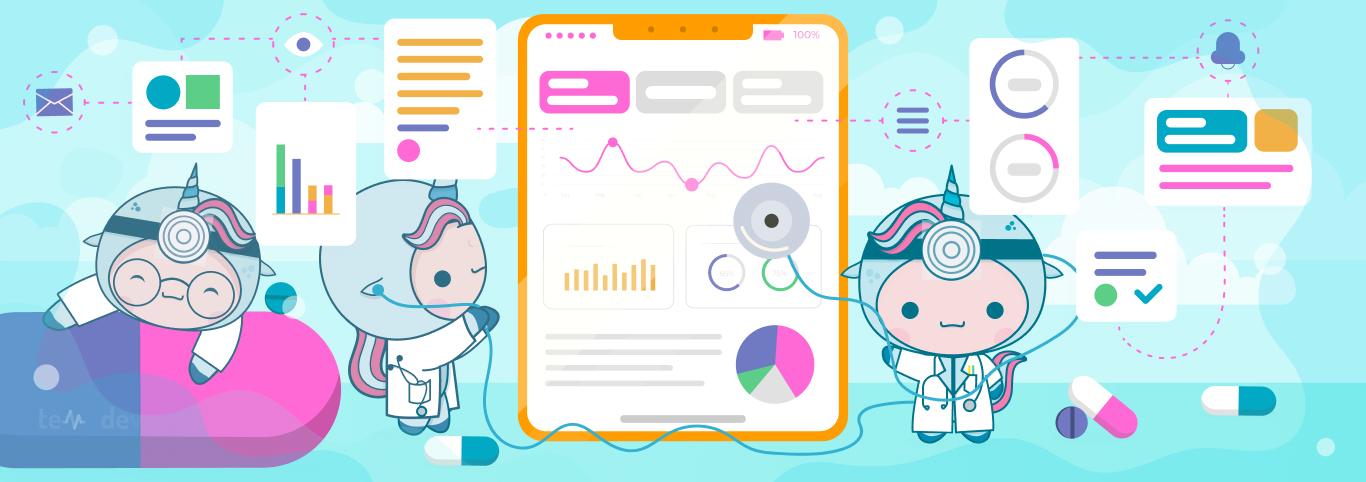
The frustrations that many doctors and healthcare workers encounter with electronic health records (EHR) or electronic medical records (EMR) have been well documented over the past couple of years. What may not be as prominent in these studies is the effect that cumbersome EHR usability can have on patients and their families.
While EHR adoption is increasing across the healthcare industry, EHR usability is a significant issue for end-users trying to access data efficiently to make the best decisions for their patients. According to one report by Peer60, 50 percent of EHR users noted that usability was a significant issue.
How is EHR usability defined?
The Healthcare Information Management Systems Society (HIMSS) defines EHR usability as “the effectiveness, efficiency, and satisfaction with which specific users can achieve a specific set of tasks in a particular environment. In essence, a system with good usability is easy to use and effective. It is intuitive, forgiving of mistakes, and allows one to perform necessary tasks quickly, efficiently, and with a minimum of mental effort.”
The International Organization for Standardization defines usability as “the extent to which a product can be used by specified users to achieve specified goals with effectiveness, efficiency, and satisfaction in a specified context of use.”
Even though EHR usability seems simple, user experience is often one of the most overlooked and undervalued parts of software development. Recently, EHR vendors have started placing it of high value since many of the content needs are satisfied. From the perspective of many vendors, EHR solutions are usable, but there is always room for improvement with user satisfaction.
What factors play a role in EHR usability?
A 2015 report published by HIMSS, the Nine Essential Principles of Software Usability for EMRs are:
Simplicity
Naturalness
Consistency
Forgiveness & Feedback
Effective Use of Language
Efficient Interactions
Effective Information Presentation
Preservation of Context
Minimize Cognitive Load
HIMSS touted the effectiveness of EHR usability as an outcome of technology navigation and intuitive designs and interfaces. Over time, much of the technology itself failed to remain up to date. Even EHR technology that is fully certified (CEHRT) is still plagued by usability issues, or the lack thereof. Many vendors have felt compelled to focus on regulatory needs, including CEHRT, leading to the stifling of innovation when it comes to usability.
What are the Top EHR Usability Pain Points?
While many physicians and healthcare professionals recognize that EHRs and EMRs constitute a significant improvement over paper records, the overwhelming consensus is that it could be much better.
These are some of the top common pain points when it comes to EHR usability.
Time-consuming - Physicians should be able to quickly move through the screens because anytime spent on an EHR, is time not spent on patient care. Time wasted can by compounded by system performance issues, so make sure the EHR is performing well and usable.
Siloed systems - This is a significant pain point not only for healthcare but for many other industries. When systems don’t communicate vital information between other systems, it can leave room for error, missing documentation, or other forms of confusion that is detrimental to patient care.
Different workflow goals - Any EHR system that is not matched to the overall workflow of the doctor’s practice is a cause for disruption and frustration. Detailed workflow analysis, re-engineering, and custom development are key to solving this headache.
Cost restraints - An EHR system that is costly and lacks in usability and effectiveness puts a significant strain on healthcare practices. Until EHRs can do what the majority of physicians and healthcare professionals need, it is possible it could be an expenditure without a lot of return on investment.
Regulatory requirements - Several regulatory requirements, such as MACRA MIPS, HEDIS, PCMH, and Medicaid Meaningful Use, have made using an EHR more complex. These requirements make way for increased documentation added to the process of charting for a visit. Having tools in place that will make meeting regulatory requirements part of the office visit documentation is the answer to having high-quality scores and satisfied physicians.
End-user focused - At the end of the day, physicians and other healthcare professionals are tasked with entering data into EHR systems. With so many regulatory, billing, and clinical complexities, sometimes it stops being end-user focused. Taking end-users needs collectively into focus when designing EHR systems can help to make it more usable.
Safety - Patient safety is of utmost priority for physicians and healthcare facilities. Accurate information that is left undocumented due to EHR usability is detrimental to a patient’s health and plan for treatment and recovery.
When choosing or replacing an EHR, it is critical to look for a fully certified system that meets all of the regulatory requirements. It is equally important to evaluate system usability and ensure it aligns your practice’s workflows and improves physician satisfaction.
If EHRs have a better user experience, then physicians can get back to putting patients first.
Contact TempDev to partner with our expert-level EHR consultants and transform your EHR to be more usable for physicians.
Interested?
Agree with our point of view? Become our client!
Did you enjoy this read? Feel free to share it with your contacts.







